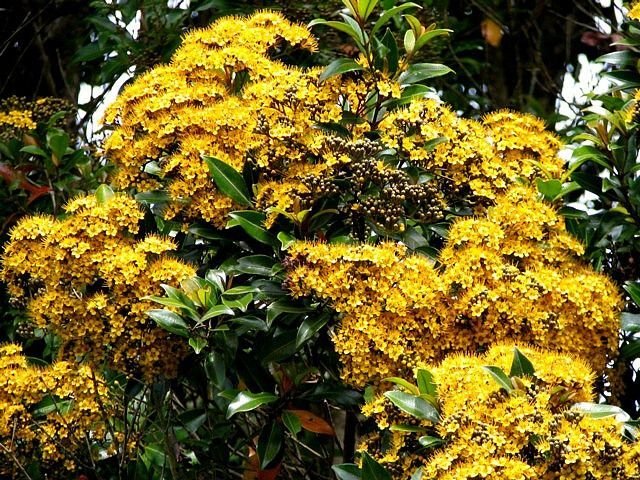 Image 1 of 2
Image 1 of 2

 Image 2 of 2
Image 2 of 2



Eupomatia laurina 'Native Guava'
Eupomatia laurina, ‘Native Guava’ is a direct descendant of the earliest true flowering plants, and its lush green foliage, heavily scented flowers, edible ripe fruit and ability to grow in a diversity of soils make it a fantastic garden plant. Like most rainforest species, Eupomatia laurina requires some summertime protection.
Eupomatia laurina is a small tree Growing up to 4 m high with a spread of up to 2 m and occurs naturally in near coastal rainforests of Queensland, New South Wales and far eastern Victoria where it is considered rare.
This aromatic fruit is often used as a spice-fruit in cooking and in beverages, jellies, jams and desserts. It can even be dried and crushed, then used as a spice. Berries ripen in Winter, turning from green to brown and becoming soft to squeeze.
Eupomatia laurina, ‘Native Guava’ is a direct descendant of the earliest true flowering plants, and its lush green foliage, heavily scented flowers, edible ripe fruit and ability to grow in a diversity of soils make it a fantastic garden plant. Like most rainforest species, Eupomatia laurina requires some summertime protection.
Eupomatia laurina is a small tree Growing up to 4 m high with a spread of up to 2 m and occurs naturally in near coastal rainforests of Queensland, New South Wales and far eastern Victoria where it is considered rare.
This aromatic fruit is often used as a spice-fruit in cooking and in beverages, jellies, jams and desserts. It can even be dried and crushed, then used as a spice. Berries ripen in Winter, turning from green to brown and becoming soft to squeeze.
Eupomatia laurina, ‘Native Guava’ is a direct descendant of the earliest true flowering plants, and its lush green foliage, heavily scented flowers, edible ripe fruit and ability to grow in a diversity of soils make it a fantastic garden plant. Like most rainforest species, Eupomatia laurina requires some summertime protection.
Eupomatia laurina is a small tree Growing up to 4 m high with a spread of up to 2 m and occurs naturally in near coastal rainforests of Queensland, New South Wales and far eastern Victoria where it is considered rare.
This aromatic fruit is often used as a spice-fruit in cooking and in beverages, jellies, jams and desserts. It can even be dried and crushed, then used as a spice. Berries ripen in Winter, turning from green to brown and becoming soft to squeeze.









